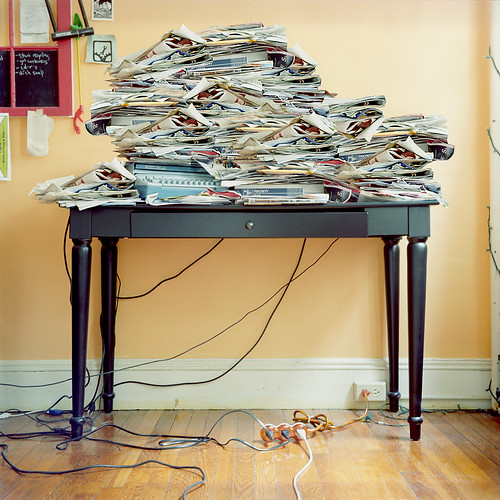#1
In 2005 paper product made up 34.2% of the total waste generated (before recycling) in the U.S., the largest piece of the pie chart. In contrast, the rate of recycling paper product in was 50%.

This is the first photograph made in the Waste series. It's (along with the rest of the series) a digitally manipulated representation of the breadth of my consumption. Two years ago I moved into my first apartment outside of the home I grew up in. At the crucial age of 20 I have suddenly been realized as a viable consumer target. Is this a modern "coming of age" signifier for my generation? It's as if a whole new world opened up, a world nothing like the exciting, well anticipated one that Aladdin and Jasmine sing about in "A Whole New World" from the Disney movie Aladdin (1992).
The actualities that I was able to ignore before, in innocence, are now part of my new life as an American adult. It is nearly impossible to live without wasting in unintentional ways. Now that I have my own mailbox, the USPS delivers innumerable amounts of junk mail addressed to me. The food products I buy are elaborately packaged in paperboard. Even the organic-for conscious healthy people-soymilk comes in non-recyclable aseptic packaging. In so many ways, some of them by choice, I am inundated with PAPER.
Listening to: The Drive-By Truckers "The Three Great Alabama Icons"

1 comment:
what is really wierd about the recycling program in boston is buildings with 1-6 units, recycling is created very easily by the city because all you need is a blue box and you are set. but for me who lives in a complex there is no recycling. and the process to get a unit installed is very time consuming for my landlords, who on a regular basis, ignore complaints or requests.
now, wouldn't it make more sense to make recycling a mandate by the city for larger units, so MORE things get recycled? what's the point of spending millions of dollars on green buildings if there isn't complete city-wide recycling?
Post a Comment